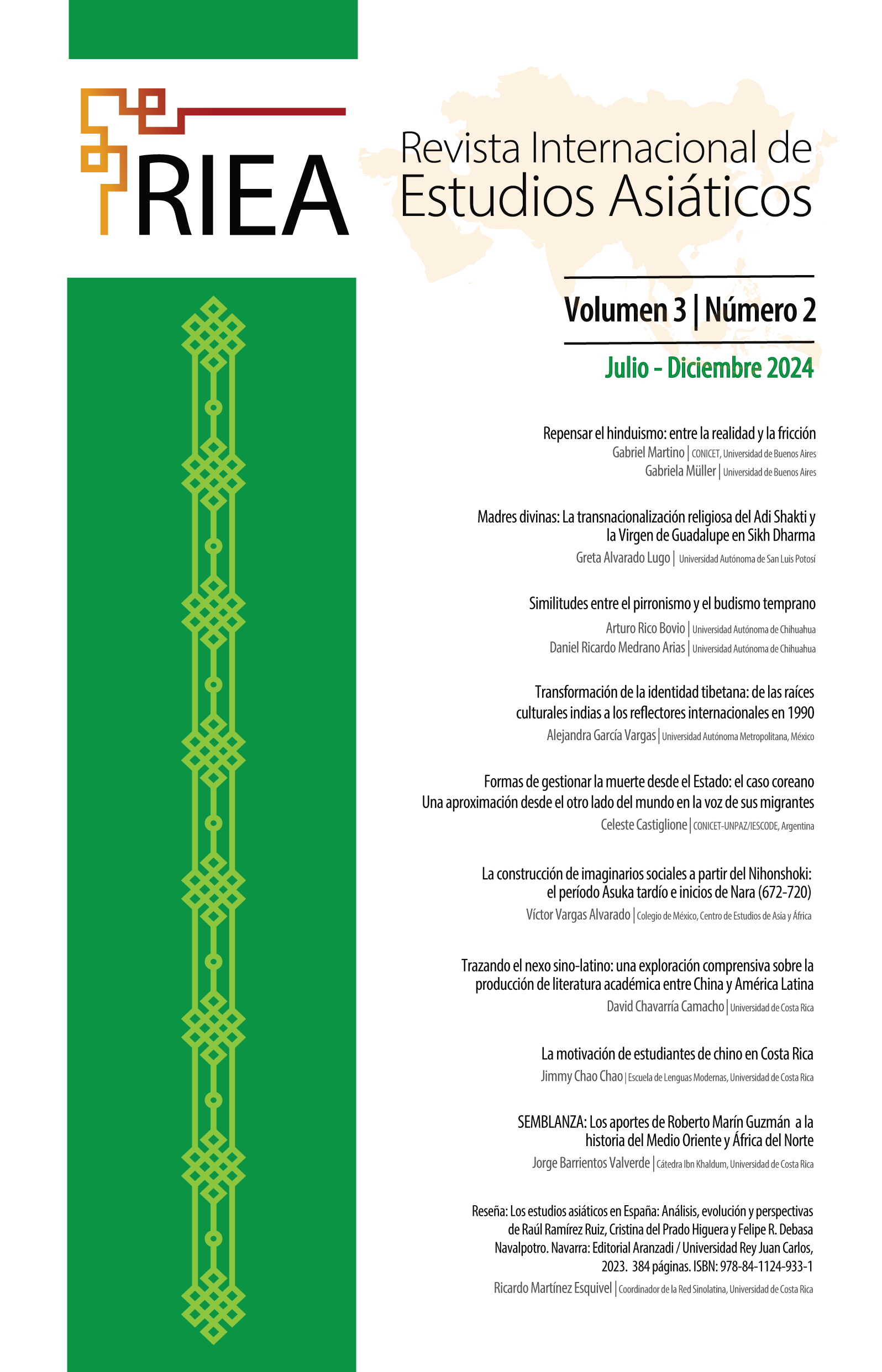Abstract
This work is based on the following general objective: Analyze the Nihonshoki as a product of its time—when it was commissioned by Emperor Tenmu (672-686) and completed in the year 720[1]—to compare its function in the construction of a social imaginary that united Japan at that time. In this way, it is considered the possible purpose that the text in question originally had, to legitimize the imperial house and that Tenmu's rise to power after the Jinshin War would not be questioned, trying to demonstrate with the text the divine origin of all the emperors and empresses so far, as well as Tenmu inserting himself into this lineage.
[1] Barnes, State Formation in Japan Emergence of a 4th-century ruling elite, 203.
References
Fuente primaria:
Aston, William George, trad. Nihongi = Nihon shoki: chronicles of Japan from the earliest times to A.D. 697. Rutland, Vermont, Estados Unidos: C.E. Tuttle, 1975.
Fuentes secundarias:
Andreu Abela, Jaime. Las técnicas de análisis de contenido: una revisión actualizada. Sevilla, Madrid: Fundación Centro de Estudios Andaluces, 2002. https://bit.ly/36chXDi.
Anzaldúa Arce, Raúl Enrique. “Reflexiones sobre la educación: una mirada desde Cornelius Castoriadis”. XIV Congreso Nacional de investigación educativa, San Luís Potosí, México, 20-24 de noviembre 2017. https://bit.ly/3rnqVIw.
Barnes, Gina. State Formation in Japan Emergence of a 4th-century ruling elite. Nueva York, Estados Unidos: Taylor & Francis, 2007.
Bentley, John R. “The Birth and Flowering of Japanese Historiography: From Chronicles to Tales to Historical Interpretation”. En The Oxford History of Historical Writing: Volume 2: 400-1400, editado por Sarah Foot y Chase F. Robinson, 58-79. Oxford, Inglaterra: Oxford University Press, 2012. https://shorturl.at/gtQ03.
Brownlee, John S. Political thought in Japanese historical writing: from Kojiki (712) to Tokushi Yoron (1712). Waterloo, Canadá: Wilfrid Laurier University, 1991.
Castoriadis, Cornelius. “El Imaginario Social Instituyente”. Zona erógena 35, (1997): 1-9. https://bit.ly/3xQHz5C.
Cheng, Anne y Sanchit Kumar, eds. Historians of Asia on Political Violence. Paris, Francia: Collège de France, 2022. https://shorturl.at/dlBO6.
García Rodríguez, Gustavo O. “Aproximaciones al concepto de imaginario social”. Civilizar: Ciencias Sociales y Humanas 19, no. 37 (2019): 31-42. https://bit.ly/3xNgrnZ.
Hane, Mikiso. Breve historia de Japón. España: Alianza editorial, 2017.
Licausi Pérez, Gabriela María. “La construcción de la verdad histórica en Japón y el Kojiki”. Temas Antropológicos, Revista Científica de Investigaciones Regionales 39, no. 1 (2017): 17-32. https://shorturl.at/dwyLX.
López Noguero, Fernando. "El análisis de contenido como método de investigación". Revista de educación 4 (2002): 167-179. https://bit.ly/2LJS700.
Miranda Ospino, Emérito Alberto. “El imaginario social bajo la perspectiva de Cornelius Castoriadis y su proyección en las representaciones culturales de Cartagena de Indias”. Tesis de pregrado, Universidad de Cartagena, 2014. https://bit.ly/2TevMim.
Sakamoto, Tarō. The six national histories of Japan. Vancouver, Canadá: University of British Columbia, 1991.
Tanaka, Michiko, coord. Historia mínima de Japón. Ciudad de México, México: El Colegio de México. 2021.
Van Dijk, Teun A. Discurso y poder. Barcelona, España: Editorial Gedisa, 2009.
Vigio, Marta, Clara Pérez y Rosa Torres. “Métodos, técnicas cuantitativas, cualitativas y de triangulación metodológica”. I Encuentro Latinoamericano de Metodología de las Ciencias Sociales, La Plata: Argentina, 10-12 de diciembre 2008. https://bit.ly/3fYpvhk.

